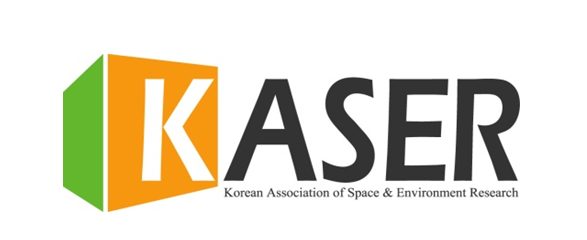ISSN : 1225-6706
논문 상세
- 2024 (34권)
- 2023 (33권)
- 2022 (32권)
- 2021 (31권)
- 2020 (30권)
- 2019 (29권)
- 2018 (28권)
- 2017 (27권)
- 2016 (26권)
- 2015 (25권)
- 2014 (24권)
- 2013 (23권)
- 2012 (22권)
- 2011 (21권)
- 2010 (33호)
- 2009 (31호)
- 2008 (29호)
- 2007 (27호)
- 2006 (26호)
- 2005 (23호)
- 2004 (21호)
- 2003 (19호)
- 2002 (17호)
- 2001 (15호)
- 2000 (13권)
- 1999 (11권)
- 1998 (10권)
- 1997 (8권)
- 1996 (7권)
- 1995 (5권)
- 1994 (4권)
- 1993 (3권)
- 1992 (2권)
- 1991 (1권)
코로나19 확산시기 서울시 외국인 밀집지역의 지역특성과 생활인구 변화
Mapping Community-level Mobility Changes of Koreans and Immigrants Using Bigdata of “de Facto Population of Seoul”: Six Ethnic Enclaves in Seoul Under COVID-19 Epidemic
장주영 (이민정책연구원)
초록
본 연구에서는 코로나19 확산에 따른 서울시민들의 이동성이 사회적 거리두기 등의 방역시책과 코로나 확산 관련 주요 사건에 따라 변화하였는지를 서울시 외국인 밀집 지역을 중심으로 살펴보았다. 구로대림, 건대입구, 신촌, 회기, 이태원, 혜화의 6개 지역에서 한국인과 외국인의 코로나19 전후 생활인구 변화를 서울 생활인구 데이터를 활용하여 2019년 11월부터2020년 6월에 걸쳐 분석해보았다. 외국인의 시간대(7시, 12시, 20시, 23시)별 생활인구 변화양상, 11월 첫 주 기준 일일 생활인구 규모 변화 비율은 외국인 밀집지역의 외국인 인구 구성에 따라 다르게 나타났다. 한국인 생활인구는 모든 연구대상 지역에서 지속적으로 감소하는경향이 나타났고 특정 시기의 증감 현상 역시 지역차가 적었다.
- keywords
- COVID-19, de facto population, foreign residents, mobility, Seoul metropolitan area, 코로나19, 외국인 밀집지역, 서울 생활인구, 이동성, 방역시책
Abstract
The study attempted to examine the mobility after the COVID-19 crisis in ethnic enclaves and the areas with a high foreign resident population in the Seoul Metropolitan area. De facto population data of Seoul using LTE signals were utilized to investigate the mobility changes between Korean natives and foreign residents in six target areas. Data from November 2019 to June 2020 were selected for analyses--the analysis of de facto population changes at four-time points per day across the target period and the total daily de facto population compared to that of early November 2019 as the reference. For Korean natives, the de facto population in all target areas had declined, especially after spikes of confirmed cases or the Korean government issuing public health orders. On the other hand, foreign residents’ patterns of de facto population change differed across the target areas with varying compositions of foreign residents. Target areas with a high proportion of international students had similar mobility patterns between Korean natives and foreign residents. Target areas with ethnic enclaves, on the other hand, revealed distinctive mobility patterns of foreign residents form Korean natives. Implications of these findings for future research are suggested.
- keywords
- COVID-19, de facto population, foreign residents, mobility, Seoul metropolitan area, 코로나19, 외국인 밀집지역, 서울 생활인구, 이동성, 방역시책
참고문헌
강철. 2020. 「코로나19 팬데믹 상황에서 메시지는 어떻게 소통되어야 하는가? ‘격리 중 자기돌봄’과 ‘감염확산방지를 위한 거리두기’라는 표현을 사용하자!」, ≪철학≫, 143호, 87~109쪽.
공윤경. 2013. 「다문화 공간에 대한 이중적 시선과 차별화」. ≪한국민족문화≫, 48호, 183~214쪽.
김석호, 하헌주. 2014. 「조선족의 거주지 분리」. ≪한국이민학≫, 5호(1), 29~47쪽.
김수경. 2020. 「감염병, 이념, 제노포비아: ‘코로나19’의 정치화와 반중 현상」. ≪다문화와 평화≫, 14호(1), 22~43쪽.
김윤경, 문태헌, 허선영, 정윤영. 2014. 「외국인 밀집지역의 공간적 분포와 영향요인 분석」. ≪주거환경≫, 12호(2), 1~15쪽.
남재형, 김흥순. 2018. 「외국인 집단 거주 지역에 대한 내국인의 인식에 관한 연구: 대림2동과 자양4동 중국인 집단 거주지역을 중심으로」. ≪한국지역개발학회지≫, 30호(1), 197~214쪽.
박세훈, 이영아, 김은란, 정소양. 2009. 『다문화사회에 대응하는 도시정책 연구: 외국인 밀집지역의 현황과 정책과제』. 국토연구원.
법무부 보도자료. 2020년 4월 20일. 4월 13일부 단기체류 외국인 대상 입국제한 조치가 가시적 효과를 보이고 있습니다.
서울특별시 외국인주민대표자회의. 2020. 2020년 상반기 외국인주민대표자회의 전체회의자료집.
서울특별시 정보기획관, KT BigData 사업지원단. 2018. 서울 생활인구추계 매뉴얼.
송도영. 2011. 「도시 다문화 구역의 형성과 소통의 전개방식 - 서울 이태원의 사례」. ≪담론201≫, 14호(4), 5~39쪽.
아시아경제. 2020년 4월 28일. “우리가 괴물입니까?” 코로나 100일, 대림동 할퀸 혐오.
이석준, 김경민. 2014. 「서울시 조선족 밀집지 간 특성 분석과 정책적 함의」. ≪서울도시연구≫, 15호(4), 1~16쪽.
이선화. 2008. 「외국인 노동자 유입에 대한 도시지역 원주민의 대응: 안산 원곡동의 사례」. ≪비교문화연구≫, 14호(2), 123~166쪽.
이정현, 정수열. 2015. 「국내 외국인 집중 거주지의 유지 및 발달」. ≪한국지역지리학회지≫, 21호(2), 304~318쪽.
장주영, 박민정, 강동관, 이재경. 2019. 『이주민 의료서비스 제공 실태 및 개선방안』. 이민정책연구원 연구보고서 2019-10.
전병규, 최창규. 2012. 「중국인 집단거주지에 대한 중국인의 장소인식 및 이용특성 실증분석– 안산시 원곡동의 한국계 중국인과 그 외 중국인을 대상으로」. ≪한국도시설계학회지≫, 13호(1), 125~141쪽.
전진아, 이지혜. 2020. 「코로나바이러스감염증-19 마음건강 돌봄 현황 및 과제」. ≪보건복지Issue & Focus≫, 375호.
한겨레. 2020년 1월 29일. “신종 코로나가 우리 탓인가?” 혐오에 숨죽이는 대림동. http://www.hani.co.kr/arti/society/society_general/925986.html
한국리서치. 2020a. “코로나19를 통해 본 대한민국 시민사회와 혐오”.
한국리서치. 2020b. “코로나19 상황 인식 조사”. 여론 속의 여론.
행정안전부. 2019. 2018년 지방자치단체 외국인주민 현황.
BBC News. 2020.3.12. “Coronavirus in South Korea: How ‘trace, test and treat’ may be saving lives.” BBC News, https://www.bbc.com/news/world-asia-51836898
Harper, C.A., Satchell, L. P., Fido, D., and Latzman, R.D. 2020. “Functional fear predicts public health compliance in the COVID-19 pandemic.” PsyArXiv Preprints.
Pakpour, A. H. and Griffiths, M. D. 2020. “The fear of COVID-19 and its role in preventive behaviors.” Journal of Concurrent Disorders.
Ross, J., Diaz, C., and Starrels, J. 2020. “The disproportionate burden of COVID-19 for immigrants in Bronx, New York.” JAMA Intern Med, Vol. 180, No. 8, pp. 1043~1044.
Tannenbaum, M. B., Hepler, J., Zimmerman, R. S., Saul, L., Jacobs, S., Wilson, K., and Albarracín, D. 2015. “Appealing to fear: A meta-analysis of fear appeal effectiveness and theories.” Psychological Bulletin, Vol. 141, No. 6, pp. 1178~1204.
UN News. 2020.3.30. “COVID-19 stoking xenophobia, hate and exclusion, minority rights expert warns.” https://news.un.org/en/story/2020/03/1060602

